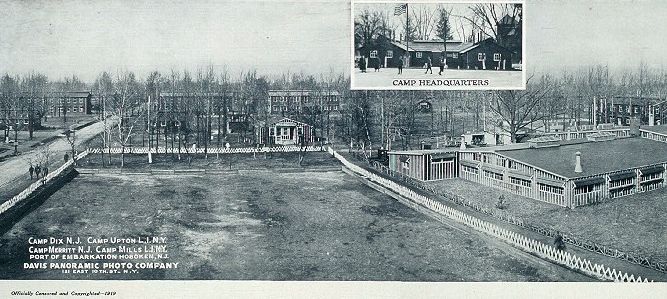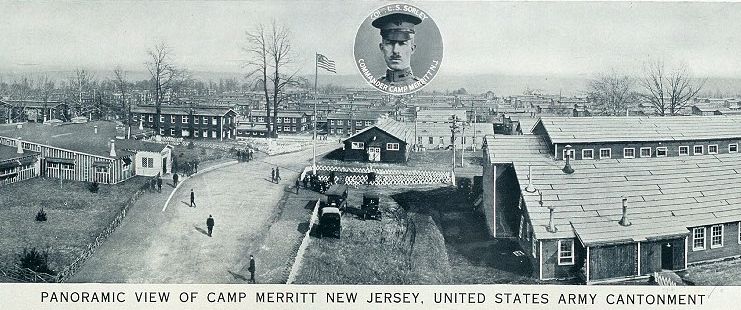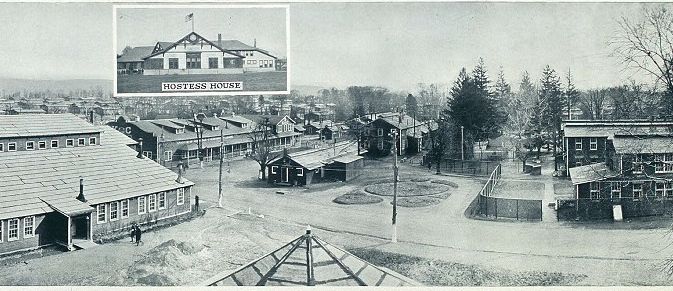Camp Merritt (2)
|
Camp Merritt (2) (1917-1920) - A U.S. Army World War I Embarkation Camp first established in 1917 near Cresskill, Bergen County, New Jersey. Named Camp Merritt after Major General Wesley Merritt (Cullum 1868), U.S. Civil War cavalry officer. Abandoned in 1920.
World War IA U.S. Army Embarkation Camp established in 1917 to process U.S. military units for sea transport to the war front in Europe through the Hoboken Port of Embarkation. Camp Merritt was opened 1 Oct 1917 on a site of about 770 acres at a cost of about $ 10,000,000. The camp processed about one million of the two million troops sent to Europe during the war. Embarkation ProcessThe embarkation process usually began at one of the 32 divisional training camps (16 for the National Army (draftees) and 16 for the National Guard) with troops riding to the embarkation camps by train and spending a variable amount of time at the embarkation camp. From the Camp Merritt embarkation camp troops usually marched to the nearby Alpine ferry slip on the Hudson River and traveled by ferry directly to the Hoboken Port of Embarkation docks and onto troop ships. At the Newport News Port of Embarkation all four of the embarkation camps were close enough to the port for the troops to march directly to the ships. Infantry Divisions were too large to move intact on single ships so it could take a division a month or two to reassemble on the European side. The typical U.S. infantry division contained about 1,000 officers and 27,000 enlisted men. The largest available troop ship, the Leviathan, could deliver 12,000 men a month. Troops were sent directly to France or via England. Some 2,084,000 U.S. troops reached France and 1,390,000 saw active service on the front lines. When the armistice took effect on 11 Nov 1918 many of the embarkation camps became disembarkation camps. The returning National Army and the National Guard troops were, for the most part, sent back to one of the training camps for demobilization. The process of returning the troops home from overseas took place at even a faster pace than sending them over. Most troops were returned to the states and demobilized by mid 1919. The training camps and the embarkment camps closed as they completed the demobilizing process for their returning division(s). Many of the training camps had established large hospital complexes to treat wounded returning soldiers and these remained open even after the camps had closed. The realization that many of the wounded would require lifetime care gave rise to the Veterans Administration (VA) hospital system. At the end of the war Camp Merritt became a disembarkment center, reversing the embarkation process until it was abandoned in 1920. In 1924 a monument to the 563 personnel who died at Camp Merritt during the 1918 influenza epidemic was placed at the former center of the Camp.
Current StatusMonument in Merritt Memorial Circle, Bergen County, New Jersey.
Sources:
Links:
Visited: No
| ||||||||||||||||||||||||||||||||||


